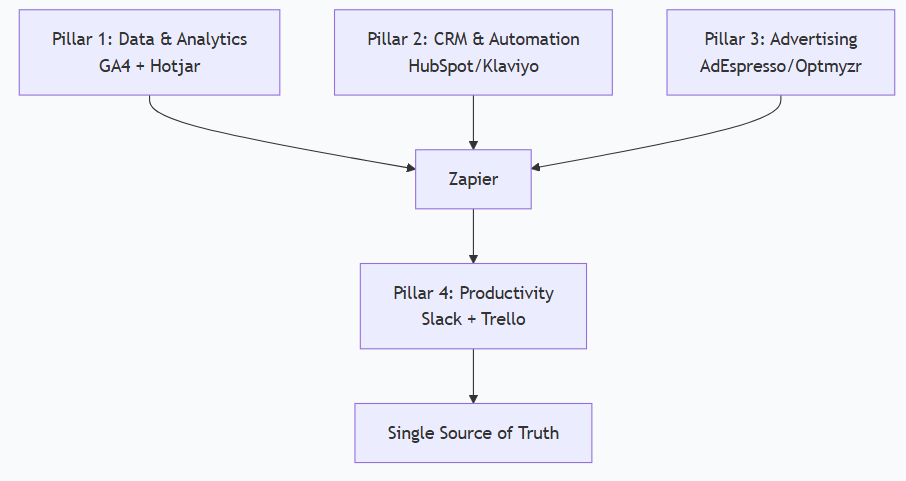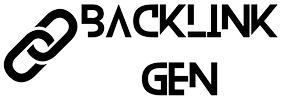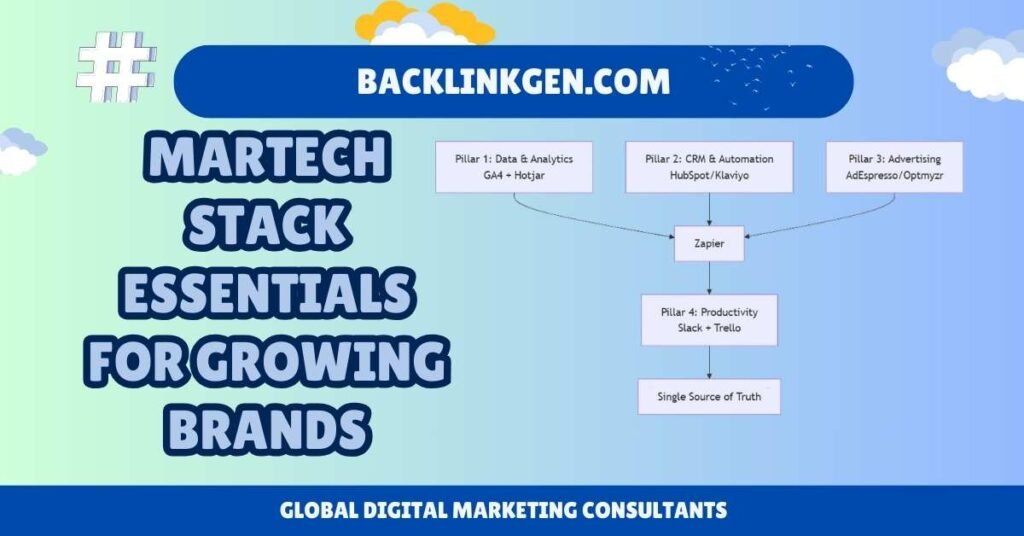By Amit, Digital Marketing Strategist (15+ Years, 50+ Websites Built)
After 15 years scaling IT consultancies and e-commerce brands, I’ve witnessed a brutal truth: most growing brands are either drowning in useless martech tools or starving for the right ones. I’ve seen companies waste $5,000 monthly on a “stack” that’s just a collection of disconnected subscriptions.
The goal of a martech stack isn’t to have the most tools; it’s to have the right tools that work together to create a seamless, data-driven growth engine. Having built and optimized stacks on a lean $18K ad budget, I’ll show you how to build a foundation that scales with you, without the bloat.
❌ The 3 Deadly Martech Mistakes Growing Brands Make
- Shiny Object Syndrome: Buying enterprise-level tools (like Marketo) before you have the team or data to use them. You end up using 5% of a tool’s capability at 100% of the cost.
- The Data Silo Trap: Using disconnected tools that don’t talk to each other. Your email platform doesn’t sync with your CRM, so your sales team has no context on leads.
- Analysis Paralysis: Implementing a complex analytics dashboard before you’ve defined your 3-5 key business metrics. You have data, but no insight.
🧱 The 4 Pillars of a Lean, High-Impact Martech Stack
Your stack should be built on four core pillars. For each pillar, I’ll recommend a scalable, affordable “Starter” tool and a more powerful “Growth” tool.
Pillar 1: Data & Analytics (The Brain)
This is the foundation. Without clean data, every other tool is guessing.
- Starter Tool:Google Analytics 4 (GA4) & Google Tag Manager (GTM).
- Why: It’s free and incredibly powerful for understanding user behavior, acquisition channels, and conversions.
- My Implementation Tip: Don’t just install it. Use GTM to track key events: button clicks, form submissions, video plays. This turns GA4 from a vanity metric dashboard into an action engine.
- Growth Tool:Microsoft Clarity (Free) + Hotjar.
- Why: GA4 tells you what users are doing; session recording tools like Clarity and heatmaps from Hotjar show you how they’re doing it. See where they get stuck, what they ignore, and what they love.
Pillar 2: CRM & Marketing Automation (The Heart)
This is where you nurture relationships and turn strangers into customers.
- Starter Tool:HubSpot CRM (Free Tier).
- Why: It’s the best free CRM on the market. You can manage contacts, deals, and track email interactions without a budget. Its marketing hub is a natural, affordable upgrade path.
- Growth Tool:Klaviyo (for E-commerce) or HubSpot Marketing Hub (for B2B).
- Why:
- Klaviyo: Unbeatable for e-commerce. Its segmentation based on purchase data and abandoned carts is pure magic. It can easily become your highest-ROI tool.
- HubSpot Marketing Hub: Perfect for B2B. The integration between the CRM and marketing tools allows for sophisticated lead scoring and lifecycle stages.
- Why:
Pillar 3: Advertising & Social Media (The Megaphone)
This is how you efficiently acquire new customers.
- Starter Tool:Native Platform Tools (Meta Ads Manager, Google Ads).
- Why: Start here. Master the basics of targeting, bidding, and creative within the native interfaces before adding complexity.
- Growth Tool:AdEspresso (for Meta/Instagram) or Optmyzr (for Google Ads).
- Why: These tools help you scale by automating A/B testing, bulk edits, and providing clearer ROAS reporting across campaigns. They save hours of manual work.
Pillar 4: Productivity & Operations (The Nervous System)
This is the glue that holds everything together and keeps your team efficient.
- Starter Tool:Slack (communication) + Trello (project management).
- Why: Low-cost, intuitive, and they integrate with almost everything. They prevent chaos as your team grows.
- Growth Tool:Zapier.
- Why: This is the most important tool in your stack. Zapier automates workflows between your other tools. Example: When a deal is marked “Closed-Won” in HubSpot, Zapier can automatically add that customer to a “VIP” segment in Klaviyo and create a task in Trello for the onboarding team. This eliminates manual data entry and human error.

🛠️ My $18K-Tested Stack for Different Business Models
For a B2B IT Consultancy (Lead Generation Focus):
- Data: GA4 + GTM
- CRM/Automation: HubSpot (Starter)
- Advertising: Google Ads + LinkedIn Native Tools
- Productivity: Slack + Trello + Zapier
- Key Integration: A lead form submission on the website (tracked in GA4) creates a contact in HubSpot and triggers a personalized follow-up email sequence.
For an E-commerce Brand (Direct Sales Focus):
- Data: GA4 + Microsoft Clarity
- CRM/Automation: Klaviyo (Essential)
- Advertising: Meta Ads Manager + Google Ads
- Productivity: Slack + Asana + Zapier
- Key Integration: An abandoned cart event (tracked in Klaviyo) triggers a series of emails and a retargeting ad on Meta.
🚀 Implementation: A 90-Day Rollout Plan
Phase 1: Month 1 – Foundation (Data & CRM)
- Install and configure GA4/GTM with key events.
- Set up your CRM and import existing contacts.
- Goal: Clean, actionable data flowing into one central hub.
Phase 2: Month 2 – Automation
- Build your first 2-3 email automation sequences (e.g., welcome series, lead nurture).
- Create 5-10 key Zaps in Zapier to connect your tools.
- Goal: Eliminate manual, repetitive tasks.
Phase 3: Month 3 – Optimization
- Analyze the data from Phases 1 and 2.
- Use session recordings to improve website conversion rates.
- Refine your ad audiences based on CRM data.
- Goal: Move from basic functionality to data-driven optimization.
🔮 The Future: AI and Your Stack
The next essential tool will be an AI co-pilot. Tools like ChatGPT integrated via Zapier can already draft personalized email responses or suggest subject lines based on customer data. The brands that win will be those that use AI to enhance personalization at scale, not just automate spam.
“A martech stack is like a high-performance engine. It’s not about the number of parts; it’s about how well they are tuned and synced to drive growth.”
– Amit
Overwhelmed? Start with one pillar. Master your data foundation (Pillar 1) before adding complexity. A simple, well-integrated stack will always outperform a complex, disconnected one.
About Amit: With over 15 years of experience building and optimizing martech stacks on lean budgets, Amit helps growing brands avoid costly mistakes and build scalable, data-driven marketing engines. His focus is on ROI, not just features.

